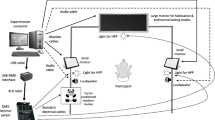Abstract
The present study investigated adult behavior while interacting with a three-month-old infant under conditions in which the child was introduced as a boy, as a girl, or with no gender information given. Gender labels did not elicit simple effects, but rather interacted significantly with the sex of the subject on both toy usage and physical contact measures. There was a stronger tendency for both male and female adults to utilize sex-stereotyped toys when the child was introduced as a girl. Most of the findings, however, reflected a differential response of men and women to the absence of gender information. In this condition, male subjects employed a neutral toy most frequently and handled the child least; in contrast, females used more stereotyped toys and handled the child more. All subjects attempted to guess the gender of the child (with “boy” guesses more frequent, although the child was actually female) and all justified their guess on the basis of stereotyped behavioral or physical cues like strength or softness.
Similar content being viewed by others
References
Bandura, A. Social learning theory of identificatory processes. In D. A. Goslin (Ed.), Handbook of socialization theory and research. Chicago: Rand McNally, 1969.
Baumel, M. H., & Lewis, M. Infants' attentional distribution across two modalities. Paper presented at the meeting of the Eastern Psychological Association, New York City, April, 1971.
Bell, R., & Darling, J. The prone head reaction in the human newborn: Relationship with sex and tactile activity. Child Development 1965, 36 943–949.
Gould, L. X: A fabulous child's story. Ms. December 1972, pp. 74–76; 105–106.
Lewis, M. Parents and children: Sex-role development. School Review 1972, 80 229–240.
Mischel, W. Sex-typing and socialization. In P. Mussen (Ed.), Manual of child psychology (Vol. II). New York: John Wiley & Sons, 1970.
Moss, H. A. Sex, age, and state as determinants of mother-infant interaction. Merrill-Palmer Quarterly 1967, 13 19–35.
Sears, R. R., Rau, L., & Alpert, R. Identification and child rearing. Stanford, California: Stanford University Press, 1965.
Weller, G. M., & Bell, R. Q. Basal skin conductance and neonatal state. Child Development 1965, 36 647–657.
Author information
Authors and Affiliations
Additional information
This research was supported by Grant No. OCD-CB-151 from the Office of Child Development, Phyllis A. Katz, Principal Investigator.
Rights and permissions
About this article
Cite this article
Seavey, C.A., Katz, P.A. & Zalk, S.R. Baby X. Sex Roles 1, 103–109 (1975). https://doi.org/10.1007/BF00288004
Issue Date:
DOI: https://doi.org/10.1007/BF00288004




